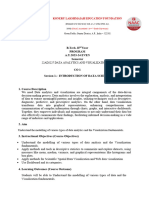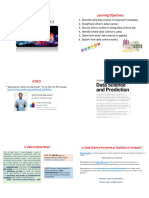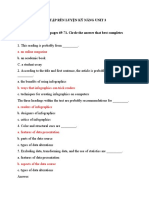0% found this document useful (0 votes)
58 views27 pagesData Science Overview Basic To Advance Guide
The document provides a comprehensive overview of a data science course, covering fundamental and advanced concepts, including data collection, cleaning, analysis, and visualization techniques. It highlights the importance of data science in various industries and outlines the data science lifecycle, emphasizing practical applications and skills development. By completing the course, students will gain a solid foundation in data science and be equipped to tackle real-world challenges.
Uploaded by
vishwakarmamahi719Copyright
© © All Rights Reserved
We take content rights seriously. If you suspect this is your content, claim it here.
Available Formats
Download as PDF, TXT or read online on Scribd
0% found this document useful (0 votes)
58 views27 pagesData Science Overview Basic To Advance Guide
The document provides a comprehensive overview of a data science course, covering fundamental and advanced concepts, including data collection, cleaning, analysis, and visualization techniques. It highlights the importance of data science in various industries and outlines the data science lifecycle, emphasizing practical applications and skills development. By completing the course, students will gain a solid foundation in data science and be equipped to tackle real-world challenges.
Uploaded by
vishwakarmamahi719Copyright
© © All Rights Reserved
We take content rights seriously. If you suspect this is your content, claim it here.
Available Formats
Download as PDF, TXT or read online on Scribd
/ 27






















































































